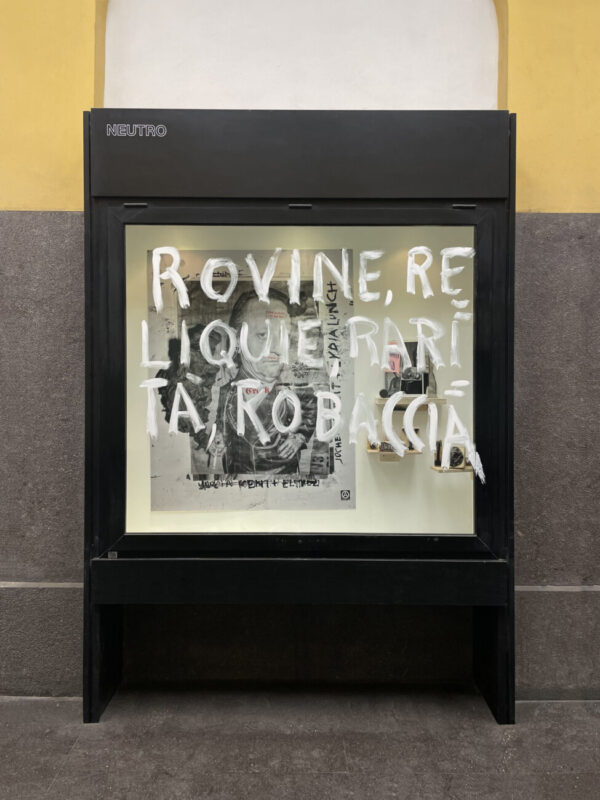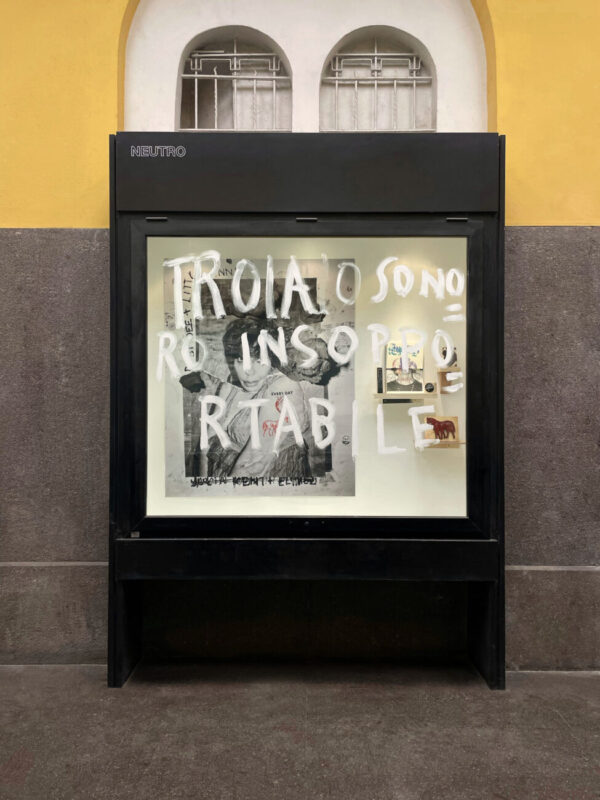Only a few more days to visit Junk B, Jacopo Benassi’s exhibition in Reggio Emilia
Words by Gianmarco Gronchi
I became familiar with Jacopo Benassi’s work guiltily late, on the occasion of Vuoto (Empty), his monographic exhibition hosted by Centro Pecci in Autumn 2020. From the photographs and works exhibited there, all the underground background that characterizes the La Spezia artist’s interests shone through. And you could immediately see that Benassi is attracted by a specific aesthetic of the ugly, by the random object that stands as a hypostasis of lived and suffered life. Benassi – who not surprisingly has a preference for black & white – manages to bring out a rough, raw, sometimes even violent world in his shots. But also genuinely free. And it is precisely Benassi’s creative freedom that becomes the protagonist of the exhibition Junk B, still on view at Reggio Emilia until the end of August.


In this case, the title is explanatory as never before. In fact, in this exhibition, we literally see the scraps of Benassi’s artistic production. Reworked and reassembled, the discarded photographs become posters on which writings, objects, and stains are agglomerated. The apparent underlying disorder is held together by Benassi’s aesthetic mark, which allows the collages to deflagrate as a cry of revenge. In Junk B the life cycle of objects is inverted and the artist forces the viewer to face what mainstream society has accustomed us to reject. The degraded reality of this temporary exhibition feeds on scraps. Worn but at the same time ennobled by time, portraits of artists who have performed at B-Tomic in La Spezia – founded by Benassi himself – are added to elements of various kinds: fanzines, newspaper clippings, pieces of wood. Benassi seems to be displaying a modern-day reliquary, where the sacred merges with the profane.


Looking at the collages, born from the artist’s own archive, the teachings of Lea Vergine and her brilliant book When Trash Becomes Art: TRASH Rubbish Mongo, published in 2006, come to mind. Benassi’s creative practice is part of a tradition that boasts well-renowed names – from Burri to Serrano, from Manzoni to Pistoletto – and whose tradition goes all the way back to Marcel Duchamp’s objet trouvé. This is not creative reuse, but rather a conceptual operation that reflects on the temporality of the object, seeking to disrupt the normal perception of the work of art.
Perhaps it is no coincidence that the exhibition is hosted by Neutro, an exhibition project conceived by Andrea Da Villa, Silvia Lomi, and Matteo Messori. Neutro consists of six display windows in a commercial passageway in Via Emilia Santo Stefano, right in the Reggio Emilia city center. Neutro is therefore the perfect venue to give life to an exhibition that forces the spectator to stop and question himself about the visual landscape that surrounds him. This is the goal of Benassi’s rubbish.




